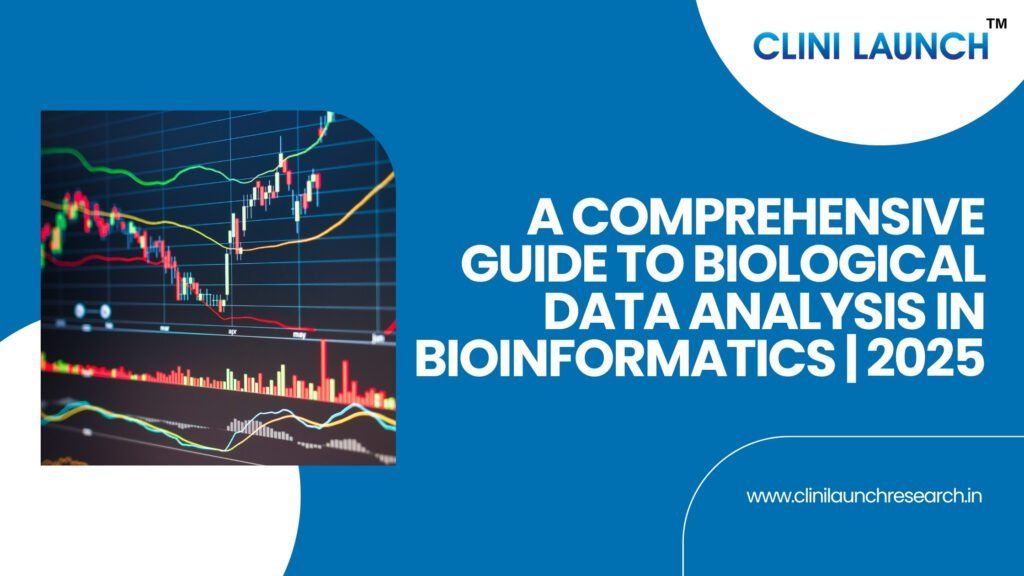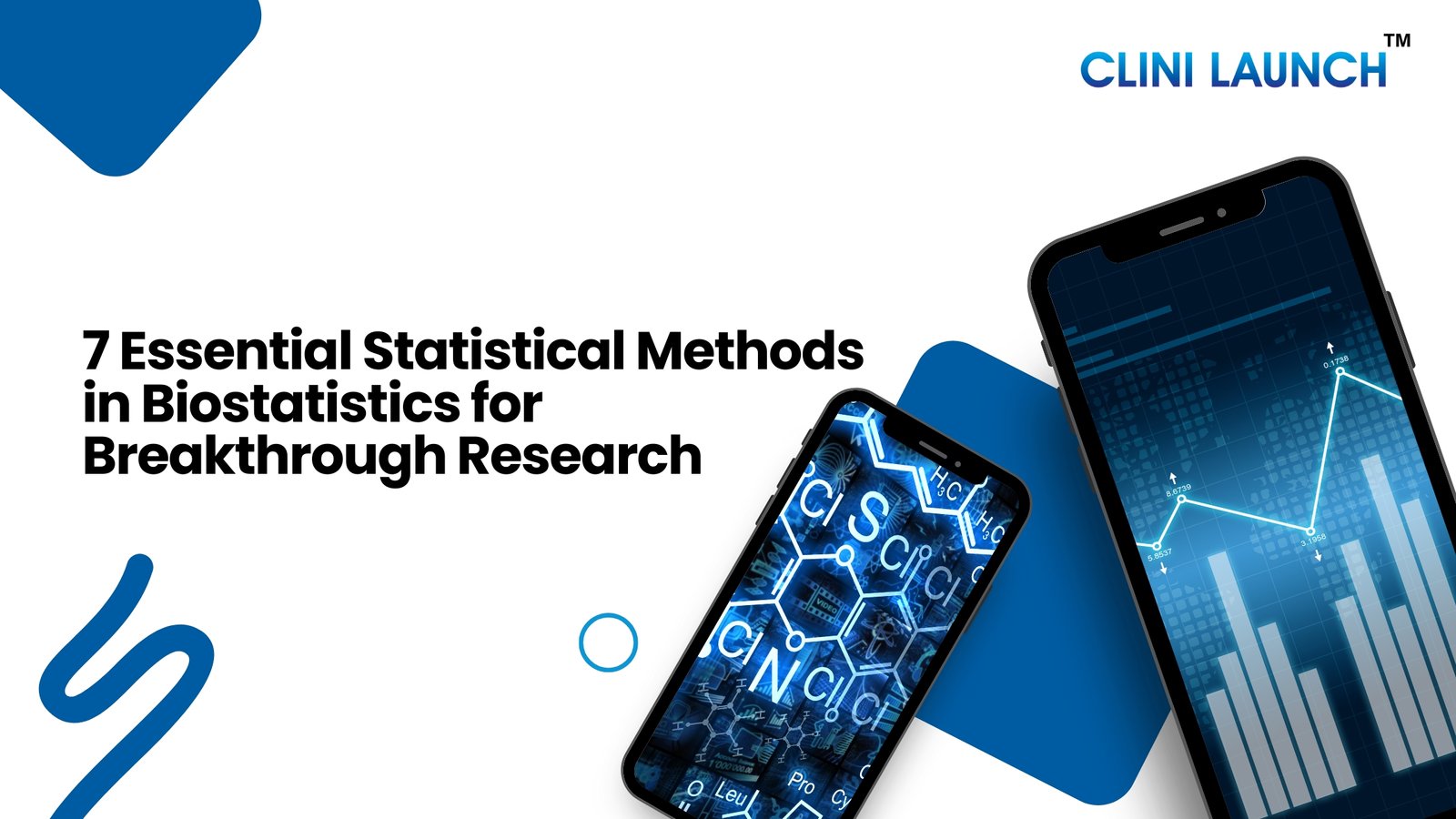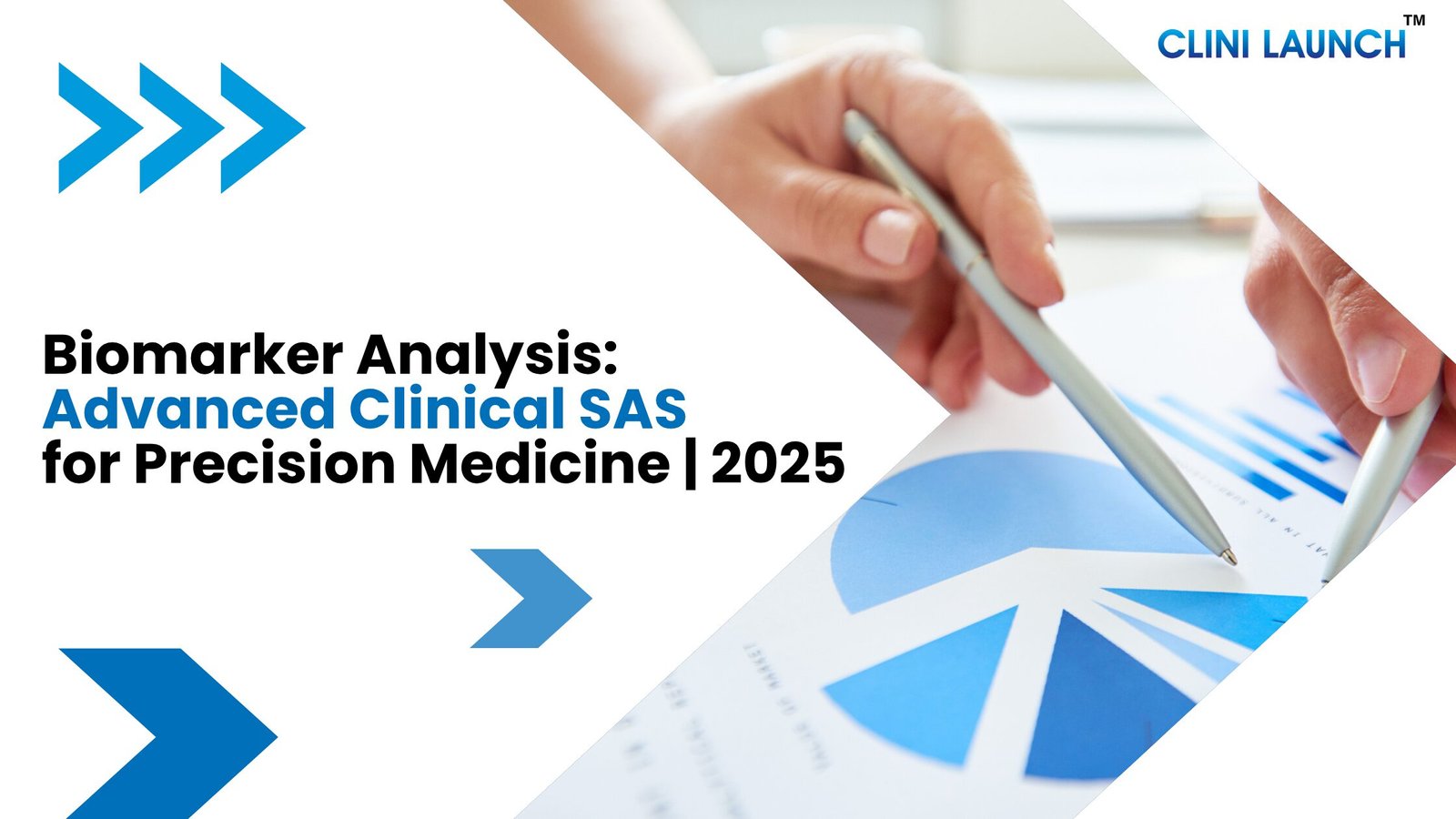The emergence of high-throughput technologies has ushered in an era of unprecedented data generation within the biological sciences. From vast genomic sequences to intricate proteomic profiles and complex metabolic networks, the sheer volume and complexity of biological data necessitate sophisticated analytical approaches.
This data-driven revolution lies Biological Data Analysis, a critical discipline within bioinformatics that extracts meaningful insights from raw biological datasets, leading to groundbreaking discoveries and advancements in medicine, agriculture, and biotechnology.
This comprehensive guide delves into the multifaceted realm of biological data analysis, exploring its significance, methodologies, applications, and the indispensable role of computational tools and specialized training, such as a biological data analysis course, in navigating this landscape.
Enroll Now: Bioinformatics Course
The Foundational Importance of Biological Data Analysis
In post-genomics, the ability to effectively analyze biological data has become paramount for solving the intricacies of life at the molecular level. Biological Data Analysis serves as the bridge between raw experimental outputs and actionable biological knowledge. Without rigorous analytical techniques, the overwhelm of data generated by modern biology remains largely incomprehensible.
This discipline empowers researchers to identify patterns, trends, and correlations within complex datasets, thereby enabling them to formulate hypotheses, validate experimental findings, and gain a deeper understanding of fundamental biological processes.
The significance of data analysis for biologists extends across various domains. In drug discovery, it facilitates the identification of potential drug targets and the prediction of drug efficacy and toxicity. In personalized medicine, it enables the tailoring of treatments based on an individual’s unique genetic and molecular profile. In agriculture, it aids in the development of crops with enhanced yield and resilience.
Furthermore, evolutionary biology allows for the reconstruction of phylogenetic relationships and the tracing of evolutionary pathways. The capacity to effectively analyze biological data is, therefore, central to addressing some of the most pressing challenges in modern science and healthcare.
The Multifaceted Applications of Biological Data Analysis
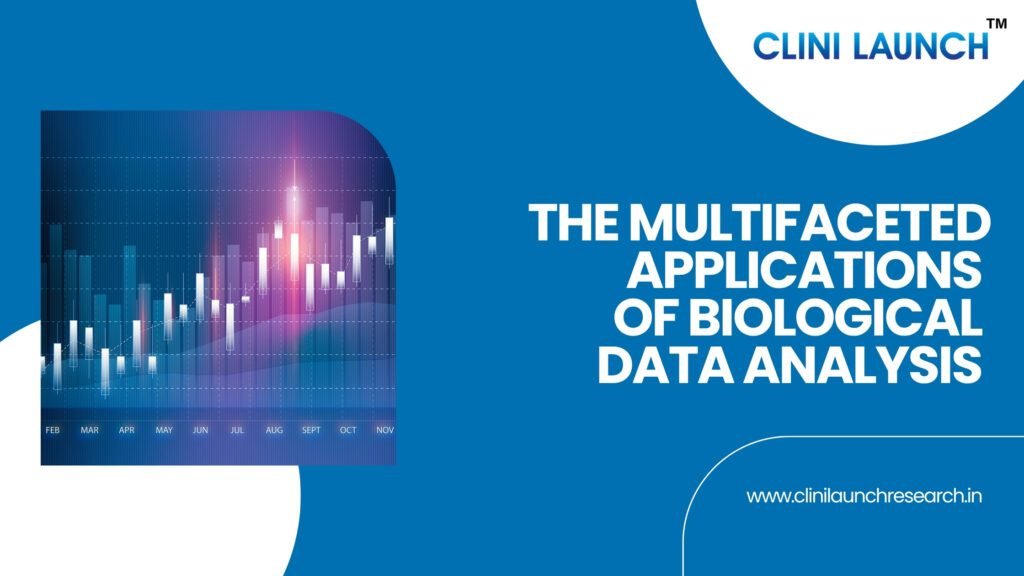
The applications of Biological Data Analysis are diverse and continuously expanding, reflecting the dynamic nature of biological research. Some of the key areas where it plays a pivotal role include:
- Genomics: The analysis of entire genomes, encompassing DNA sequencing, genome assembly, gene annotation, and the identification of genetic variations associated with diseases or specific traits. Techniques such as differential gene expression analysis help in understanding how gene activity changes under different conditions.
- Transcriptomics: The study of RNA molecules, including messenger RNA (mRNA), transfer RNA (tRNA), and ribosomal RNA (rRNA). Transcriptomic analysis provides insights into gene expression patterns, alternative splicing events, and the regulatory networks that control cellular processes. RNA sequencing (RNA-Seq) is a powerful tool in this field.
- Proteomics: The large-scale study of proteins, focusing on their structure, function, interactions, and modifications. Proteomic analysis is crucial for understanding cellular mechanisms, identifying disease biomarkers, and developing new therapeutic strategies. Techniques like mass spectrometry are fundamental to protein identification and quantification.
- Metabolomics: The comprehensive analysis of small molecules (metabolites) within a biological system. Metabolomics provides a snapshot of the metabolic state of an organism or cell, offering insights into physiological responses to stimuli, disease progression, and drug effects.
- Phylogenetics: The study of evolutionary relationships among organisms. Biological Data Analysis in phylogenetics involves the use of sequence data (DNA or protein) to construct phylogenetic trees, illustrating the evolutionary history and relatedness of different species or populations.
- Structural Bioinformatics: This field focuses on the analysis and prediction of the three-dimensional structures of biological macromolecules, particularly proteins and nucleic acids. Understanding protein structure is essential for elucidating protein function and designing targeted therapies.
- Systems Biology: This interdisciplinary approach aims to understand biological systems as integrated networks of interacting components. Biological Data Analysis in systems biology involves the integration of various types of omics data to model and simulate complex biological processes.
- Drug Discovery and Development: Bioinformatics tools and analytical methods are extensively used in the drug discovery pipeline, from identifying potential drug targets to predicting the efficacy and safety of drug candidates.
Each of these areas relies heavily on data analysis for biologists, employing a range of statistical and computational techniques to extract meaningful information from complex datasets.
Navigating the Data Analysis Process for Biologists
The process of Biological Data Analysis typically involves several key steps, each requiring careful consideration and the application of appropriate methodologies:
- Data Acquisition and Preprocessing: This initial stage involves obtaining raw biological data from various sources, such as sequencing instruments, microarrays, or mass spectrometers. The data then undergoes preprocessing steps, which may include quality control, data cleaning, normalization, and filtering to ensure accuracy and reliability for subsequent analysis.
- Exploratory Data Analysis (EDA): EDA involves the use of visual and statistical techniques to summarize the main characteristics of the dataset, identify patterns, detect outliers, and formulate hypotheses. This step is crucial for gaining an initial understanding of the data and guiding further analysis.
- Statistical Analysis and Modeling: This core stage involves the application of statistical methods and computational models to test hypotheses, identify significant differences, and make predictions based on the data. The specific techniques employed will depend on the type of data and the research question being addressed.
- Interpretation and Visualization: Once the statistical analysis is complete, the results need to be interpreted in the context of the biological problem being studied. Data visualization techniques, such as graphs, charts, and network diagrams, play a crucial role in effectively communicating findings.
- Validation and Iteration: The results of the Biological Data Analysis should be validated using independent datasets or experimental approaches. The entire process may be iterative, with findings from one stage leading to refinements in the methodology or the formulation of new hypotheses.
For biologists, understanding these steps and having the necessary skills to execute them effectively is essential for conducting impactful research.
Protein Sequence Analysis in Bioinformatics

Among the many applications of Biological Data Analysis in bioinformatics, protein sequence analysis in bioinformatics holds particular significance. Proteins are the workhorses of the cell, carrying out a vast array of functions essential for life. The linear sequence of amino acids that constitutes a protein dictates its three-dimensional structure and, consequently, its function. Analyzing protein sequences can provide a wealth of information, including:
- Identification of Functional Domains and Motifs: Protein sequences often contain conserved regions known as domains or motifs, which are associated with specific functions. Identifying these conserved regions can provide clues about the protein’s role in the cell.
- Prediction of Protein Structure: While experimental determination of protein structure can be time-consuming and challenging, computational methods can predict structural features based on the amino acid sequence. This is crucial for understanding protein functions and interactions.
- Inferring Evolutionary Relationships: Comparing protein sequences across different species can reveal evolutionary relationships and identify conserved regions that are likely to be functionally important.
- Identification of Mutations and Their Potential Impact: Analyzing protein sequences from individuals with diseases can help identify mutations that may be responsible for the condition. Computational tools can also predict the potential impact of these mutations on protein structure and function.
- Drug Design and Target Identification: Understanding protein sequences and structures is fundamental for designing drugs that can specifically interact with target proteins.
Various computational tools and databases are available for protein sequence analysis in bioinformatics. These resources enable researchers to perform sequence alignments, search for conserved domains, predict protein structure, and analyze the functional implications of sequence variations.
The Role of Python for Biological Data Analysis
In the modern era of bioinformatics, programming skills have become increasingly essential for conducting Biological Data Analysis. Among the various programming languages used in this field, Python for biological data analysis has emerged as a particularly popular and powerful choice. Python’s versatility, readability, and extensive ecosystem of libraries make it ideally suited for a wide range of bioinformatics applications.
Some of the key reasons why Python is widely used for biological data analysis include:
- Rich Ecosystem of Libraries: Python boasts a vast collection of specialized libraries that are invaluable for bioinformatics tasks. Libraries such as NumPy and SciPy provide powerful tools for numerical computation and statistical analysis. Pandas offers data structures and functions for efficiently working with structured data. Bio python is a dedicated library specifically designed for bioinformatics, providing modules for sequence manipulation, file parsing, and accessing online biological databases. Matplotlib and Seaborn are excellent libraries for creating high-quality data visualizations.
- Ease of Learning and Use: Python’s syntax is relatively simple and easy to learn, making it accessible to biologists with limited programming experience. This lower barrier to entry allows researchers to develop their own scripts and tools for data analysis, enhancing their productivity and independence.
- Versatility and Interoperability: Python is a general-purpose programming language that can be used for a wide range of tasks beyond data analysis, such as web development and automation. It also interoperates well with other programming languages and tools commonly used in bioinformatics.
- Large and Active Community: Python has a large and active community of users and developers, which means that there is ample support available for troubleshooting and learning. The continuous development of new libraries and tools further enhances Python’s capabilities for biological data analysis.
A strong foundation in python for biological data analysis is, therefore, a high asset for anyone pursuing a career in bioinformatics or biological research. Many biological data analysis courses incorporate Python programming as a core component of their curriculum.
Embarking on a Biological Data Analysis Course from Bioinformatics
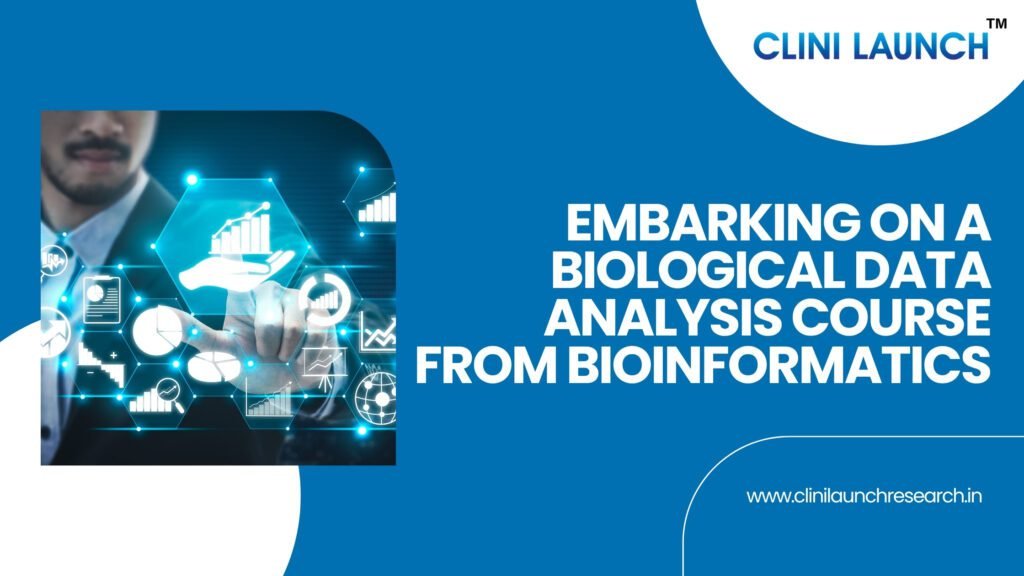
For individuals aspiring to master the skills and knowledge required for effective Biological Data Analysis, enrolling in a CliniLaunch offering a comprehensive Bioinformatics Course. Such courses provide a structured learning environment where students can gain a thorough understanding of the principles, methodologies, and tools used in this field.
A well-designed biological data analysis course typically covers a range of topics, including:
- Fundamentals of Bioinformatics: An introduction to the key concepts and applications of bioinformatics, providing a foundational understanding of the field.
- Statistical Principles for Biological Data: Coverage of essential statistical concepts and methods relevant to the analysis of biological datasets, including hypothesis testing, statistical distributions, and regression analysis.
- Computational Tools and Programming in Python: Hands-on training in using Python and relevant libraries (NumPy, Pandas, SciPy, Bio python, Matplotlib, Seaborn) for data manipulation, analysis, and visualization.
- Analysis of Different Types of Omics Data: Modules dedicated to the analysis of genomic, transcriptomic, proteomic, and metabolomic data, covering common analytical techniques and tools used in each domain.
- Protein Sequence and Structure Analysis: In-depth exploration of methods for analyzing protein sequences, predicting protein structure, and understanding the relationship between structure and function.
- Database Management and Data Integration: Instruction on accessing and utilizing biological databases, as well as techniques for integrating different types of biological data.
- Machine Learning and Data Mining in Bioinformatics: Introduction to machine learning algorithms and their applications in biological data analysis, such as classification, clustering, and prediction.
- Ethical Considerations in Bioinformatics: Discussion of the ethical implications of using and analyzing biological data, including issues related to privacy and data security.
By completing a comprehensive biological data analysis course, individuals can develop the necessary skills to:
- Effectively process, analyze, and interpret various types of biological data.
- Utilize computational tools and programming languages (particularly Python) for data analysis.
- Apply appropriate statistical methods to draw meaningful conclusions from biological datasets.
- Contribute to cutting-edge research in areas such as genomics, proteomics, and drug discovery.
- Pursue diverse career opportunities in academia, industry, and government.
Final Thoughts
Biological Data Analysis stands as a cornerstone of modern biological research, enabling scientists to unlock the vast potential hidden within complex biological datasets. From understanding fundamental life processes to developing innovative therapies and sustainable agricultural practices, the ability to effectively analyze biological information is paramount. Whether through mastering the intricacies of protein sequence analysis in bioinformatics or leveraging the power of python for biological data analysis, the skills acquired in this domain are increasingly critical. A dedicated biological data analysis course provides the necessary foundation to navigate this dynamic field and contribute meaningfully to scientific advancements.
Ready to Elevate Your Bioinformatics Skills?
At CliniLaunch Research, we are committed to providing comprehensive training in cutting-edge research methodologies. While we are offering a course in bioinformatics, our programs in clinical research and related fields emphasize the importance of data analysis and equip individuals with the skills to excel in the evolving landscape of life sciences. Visit CliniLaunch Research to explore our offerings and discover how we can help you advance your career in the exciting world of biological and clinical research.
References
Biological Data Analysis
https://www.profacgen.com/Biological-Data-Analysis.htm
bioinformatics
https://www.britannica.com/science/bioinformatics
Analysis of Biological Data
Biological data bioinformatics
https://www.slideshare.net/slideshow/biological-data-bioinformatics-237074440/237074440


